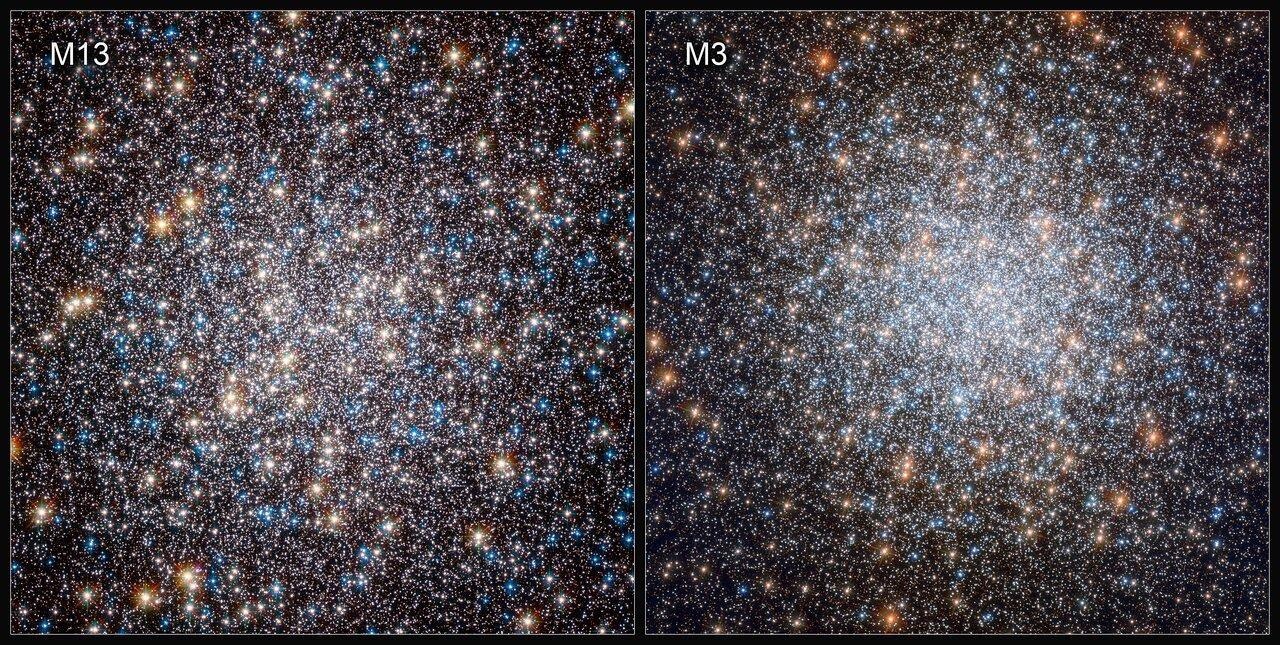Reviewed by Alex SmithSep 7 2021
The NASA/ESA Hubble Space Telescope has contradicted the prevalent view of white dwarfs as inert, slow cooling stars. An international group of astronomers has revealed the first evidence that white dwarfs are capable of slowing down their rate of aging by burning hydrogen on their surface.
 Hubble’s Views of M13 (2010) and M3 (2019). Image Credit: NASA/ESA Hubble Space Telescope.
Hubble’s Views of M13 (2010) and M3 (2019). Image Credit: NASA/ESA Hubble Space Telescope.
We have found the first observational evidence that white dwarfs can still undergo stable thermonuclear activity. This was quite a surprise, as it is at odds with what is commonly believed.
Jianxing Chen, Research Lead, Italian National Institute for Astrophysics
White dwarfs are stars that cool down slowly and cast off their exterior layer during the last stages of their life. They are common objects in the cosmos, and almost 98% of all stars in the universe will end up being a white dwarf, including the Sun. Investigation of these cooling stages enables astronomers to understand white dwarfs and also their early stages.
Astronomers analyzed the physics underlying white dwarfs’ evolution by comparing cooling white dwarfs in two huge collections of stars, namely, globular clusters M3 and M13. Both these clusters share several physical properties, such as metallicity and age. However, the populations of stars that will gradually evolve as white dwarfs are different.
Specifically, the overall color of stars at an evolutionary stage called Horizontal Branch is bluer in M13, which denotes the population of hotter stars. Thus, M3 and M13 together make an ideal natural laboratory, enabling researchers to analyze the ways different populations of white dwarfs cool.
The superb quality of our Hubble observations provided us with a full view of the stellar populations of the two globular clusters. This allowed us to really contrast how stars evolve in M3 and M13.
Jianxing Chen, Research Lead, Italian National Institute for Astrophysics
Researchers used Hubble’s Wide Field Camera 3 to track M3 and M13 at near-ultraviolet wavelengths, facilitating the comparison of 700 white dwarfs in the two clusters. It was observed that M3 contains standard white dwarfs, which are simply cooling stellar cores.
By contrast, M13 comprises two populations of white dwarfs: the standard white dwarfs and the ones that have managed to hold on to an outer covering of the hydrogen. This enables them to burn for a long time and, therefore, cool slower.
The comparison of the outcomes and computer simulations of stellar evolution in M13 revealed that approximately 70% of the white dwarfs in M13 are burning hydrogen on their surfaces, which slows down the cooling rate.
The observation may influence the method by which astronomers measure the ages of the stars in the Milky Way. Previous models of white dwarf evolution have been designed as a predictable cooling process.
The relatively direct relationship between temperature and age has led astronomers to utilize the white dwarf cooling as a natural clock to quantify the ages of star clusters, specifically open and globular clusters. Yet, white dwarfs that burn hydrogen could lead to inaccurate age estimation with an error of as much as 1 billion years.
Our discovery challenges the definition of white dwarfs as we consider a new perspective on the way in which stars get old. We are now investigating other clusters similar to M13 to further constrain the conditions which drive stars to maintain the thin hydrogen envelope which allows them to age slowly.
Francesco Ferraro, Study Coordinator, Italian National Institute for Astrophysics